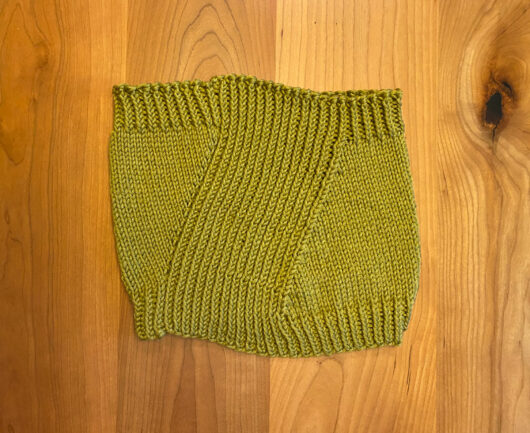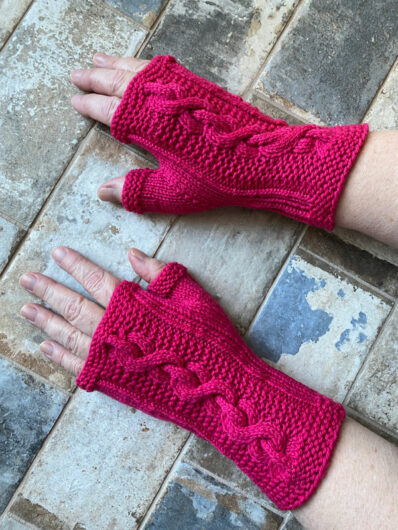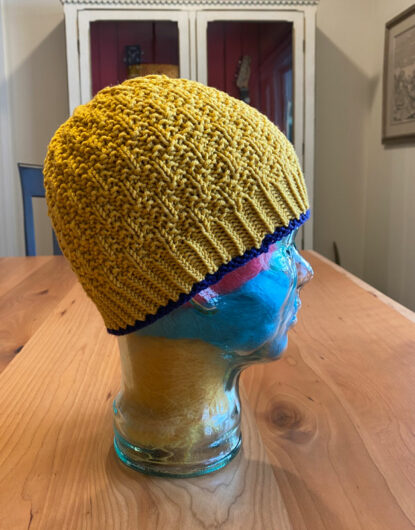Sometimes a hat should just get down to basics. Galina Shemchuk’s freebie Just a Hat does just that. A nice simple 1 by 1 rib. The body of the hat is what Shemchuk calls False English Rib. It’s a form of what I know as Mistake Rib, but worked in the round. By whatever name it’s a very easy two-round stitch pattern.
The crown decreases are well behaved. Nothing fancy. But sometimes that’s perfect. I knit my hat in Malabrigo Rios. I couldn’t be more pleased about how nicely the Indicieta colorway shows off this simple but very satisfying knit.
I’ve been having fun knitting the same patterns in different yarns or different colorways. Here’s Just a Hat knit up in a yarn that’s new to me: Merino Mix by Schoeller + Stahl. It’s labeled an Aran weight. But I knit both my Just a Hats on the same size needle, US 7 for the body of the hat and US 5 for the rib. The size of the hat and the fit are the same. GlassHead declares these are both super cozy.
GlassHead especially likes that the deep brim keeps her ears extra warm. Glass skin, especially glass ears, allow for a lot of heat loss and warm hats are a must.
Switching now from heads to necks, this is a cowl that I’ve written about many times. It’s Stephen West’s Windschief. The pattern is a twofer. You can knit it as a cowl. Or you can continue on and work crown decreases for a great unisex beanie.
I knit this Windschief in Stonehedge Fiber’s Shepherd’s Wool. 100% merino and super soft. It will pill, but my experience with it has been that it still wears well. Picking off some fuzzballs isn’t the end of the world. This close-fitting cowl only needs about 125 yards.
Often I’ve knit Windschief in Berroco Comfort. Comfort is, well, very comfortable. Perfect for this next-to-the-skin cowl. A great yarn for those who don’t tolerate wool well. My lemon yellow cowl is the, ahem,15th time I’ve knit Windschief. These next two Comforts were numbers 14 and 13.
Maybe I’m too easily amused, but just a change of colorway or change of yarn livens up working a pattern I’ve knit so many times.
This next double is Aimee Alexander’s Hungry Horse Hat. I knit my pair in Plymouth Yarns’ DK Merino Superwash. Three 130-yard-skeins yielded two excellent hats.
Never underestimate the yardage-saving power of a brimless hat. Well, Hungry Horse isn’t exactly brimless, its brim just doesn’t fold.
And such a nice pinwheel swirl of a crown decrease.
Some might accuse that if a knitter knits a pattern over and over and over that knitter’s in a rut. I might be. But I know these patterns work out well. I know that those in my giving circle appreciate receiving the final product. And I can just settle in and relax into a familiar conversation with my yarn and my needles. There are lots of days in a long life of knitting when that feels just exactly right.































